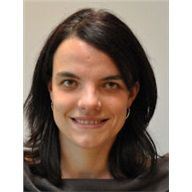The EnergyVille head office in Thor Park in Genk practically breathes sustainability. More than three years after staff moved in, the EnergyVille 1 building has been awarded the valuable BREEAM label, putting it at the forefront of sustainable construction in Belgium. The building is an example from VITO/EnergyVille that sustainable and energy-efficient construction is becoming increasingly achievable for businesses and organisations.
A BREEAM sustainability certificate is the oldest method of determining the sustainability of a building. British by origin, this label also covers material usage, waste management, mobility and accessibility, management, environmental impact and even comfort alongside energy considerations, so it cannot simply be compared with a mere energy performance certificate, for example.
BREEAM assigns a score to each of the different aspects and these are added together based on both the design phase and the completed building (post-construction phase). This final score is then converted into a rating which appears on the sustainability label – if this is actually awarded. There are five ratings: 'satisfactory' (>30 %), 'good' (>45 %), 'very good' (>55 %), 'excellent' (>75 %) and 'outstanding' (>85 %). As well as the final score, there are also specific elements which have to be absolutely correct before an outstanding score can be awarded.
As an ambitious research centre into sustainable energy systems, VITO/EnergyVille had no other option than to aim for as high a sustainability score as possible for its infrastructure and how it is used. They therefore decided during the very first design phase, in autumn 2013, to aim high to achieve a BREEAM certificate for the EnergyVille 1 building in Genk. The sustainability label was awarded in autumn 2019, along with a final verdict for EnergyVille 1 of 'outstanding'. The fact that the EnergyVille head office achieved this score in the post-construction phase also shows that the level of sustainability in the design wasn't compromised during the construction process; in other words, the building isn't just extremely sustainable on paper.
So, how did VITO/EnergyVille achieve the maximum sustainability score? Let's take a look.
Location: a crucial factor
Sustainable construction starts before the first stone is actually laid and choosing a brownfield site avoided having to break new ground for the build. The site is also located at the heart of the Thor science park in Genk, an area with many facilities available to VITO/EnergyVille staff, which then didn't have to be provided within the building itself.
Good accessibility was also a priority when choosing the site and was guaranteed thanks to public transport (the Genk train station is nearby, as well as a bus stop) and alternative forms of transport such as bikes. People who come by car are encouraged to car share and electric vehicles are supported by no fewer than 18 charging stations and 2 quick chargers in the parking area.
Energy: as economical and electric as possible
The building is heated by a range of sources that are activated in a waterfall system rated in order of emissions and energy costs (from low to high). Heating is initially provided by residual heat from the thermotechnical laboratory. If this is not available or cannot cover the full demand, then two ground-source heat pumps are used, followed by three condensation boilers (which are powered by gas). The heat pumps run on electricity generated by 1070 solar panels on the roof.
The heating system is also compatible with a futuristic heating network that may potentially be installed on the Thor campus. The heat pumps are also used for cooling during warm weather, alongside dry coolers or residual cooling from the laboratory if required. Energy consumption is also limited by thoroughly insulating the building and paying careful attention to keeping it airtight.
Environment: as little disruption as possible
Both noise and light pollution are minimised; exterior lighting is only provided where necessary and is also controlled by a timer so lights go off when they aren't needed.
Plenty of attention was also paid to protecting the existing natural elements during construction. Large trees along the access route were screened off and noise pollution during the nesting season for birds was avoided wherever possible. The amount of construction and site waste generated during the build was minimised, for example by limiting the packaging material used, and all waste was carefully sorted. Waste streams were also considered during the design process, so a special area has been designated for sorting them.
People: a building created for and by its users
The BREEAM assessment also looks at people, not just materials and energy. A sustainable building needs to be a place where people feel comfortable, so users and other stakeholders (including the Genk city administration) were involved right from the very first design phase.
The lighting and acoustics were very carefully considered and all offices are located on the outer wall, with large windows for plenty of natural light. Automatic blinds limit glare (e.g. on computer screens) and prevent overheating and windows mean users can enjoy views of their surroundings. The artificial lighting is automatically controlled to avoid things like annoying flickering while dividing walls, some with acoustic plasterboard, optimise acoustics. These walls have also been tested and found to be effective.
The latest technology and materials have been used to ensure comfortable interior temperatures and good air quality. Building users can adjust the heating and cooling to suit their requirements, thanks to a customised user guide, and office areas have opening windows, even though ventilation is mechanical and regulated in line with relevant standards. Finishing materials with lows VOCs were also used to maximise the interior air quality.

